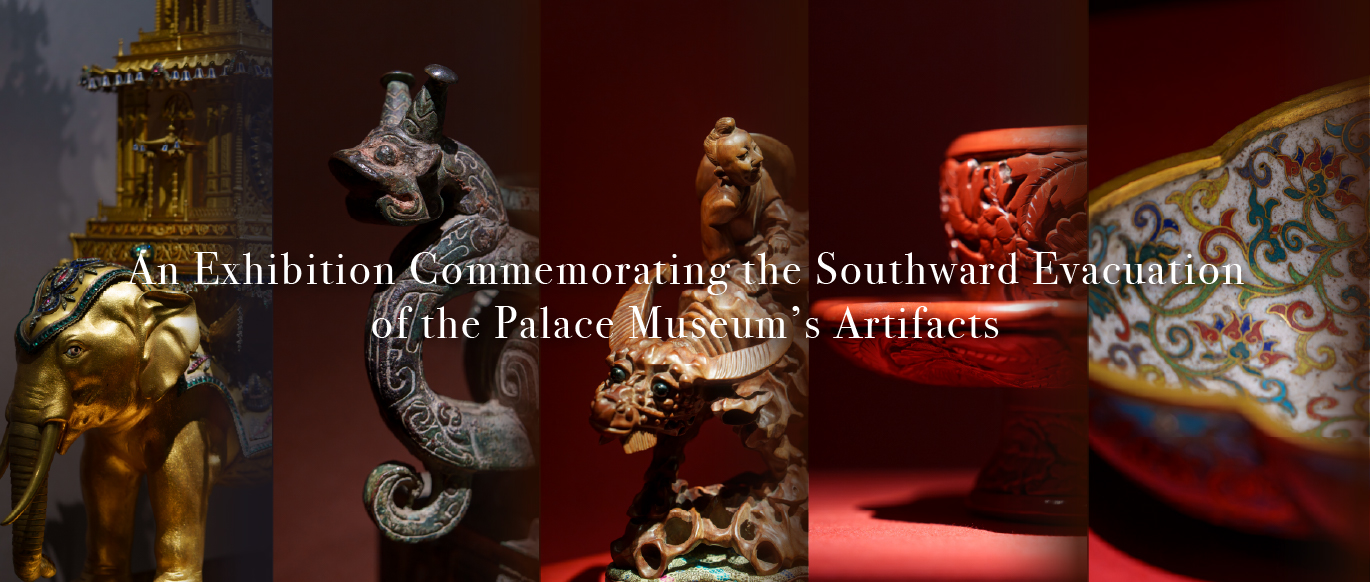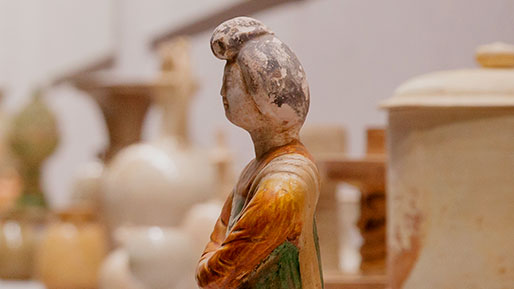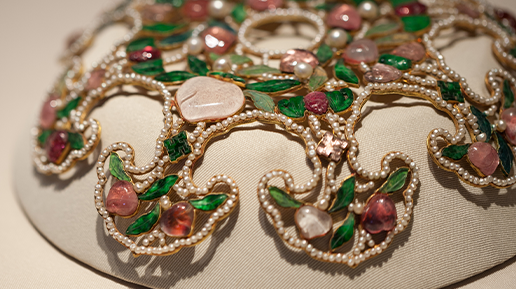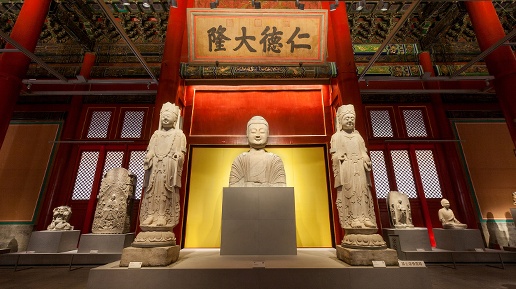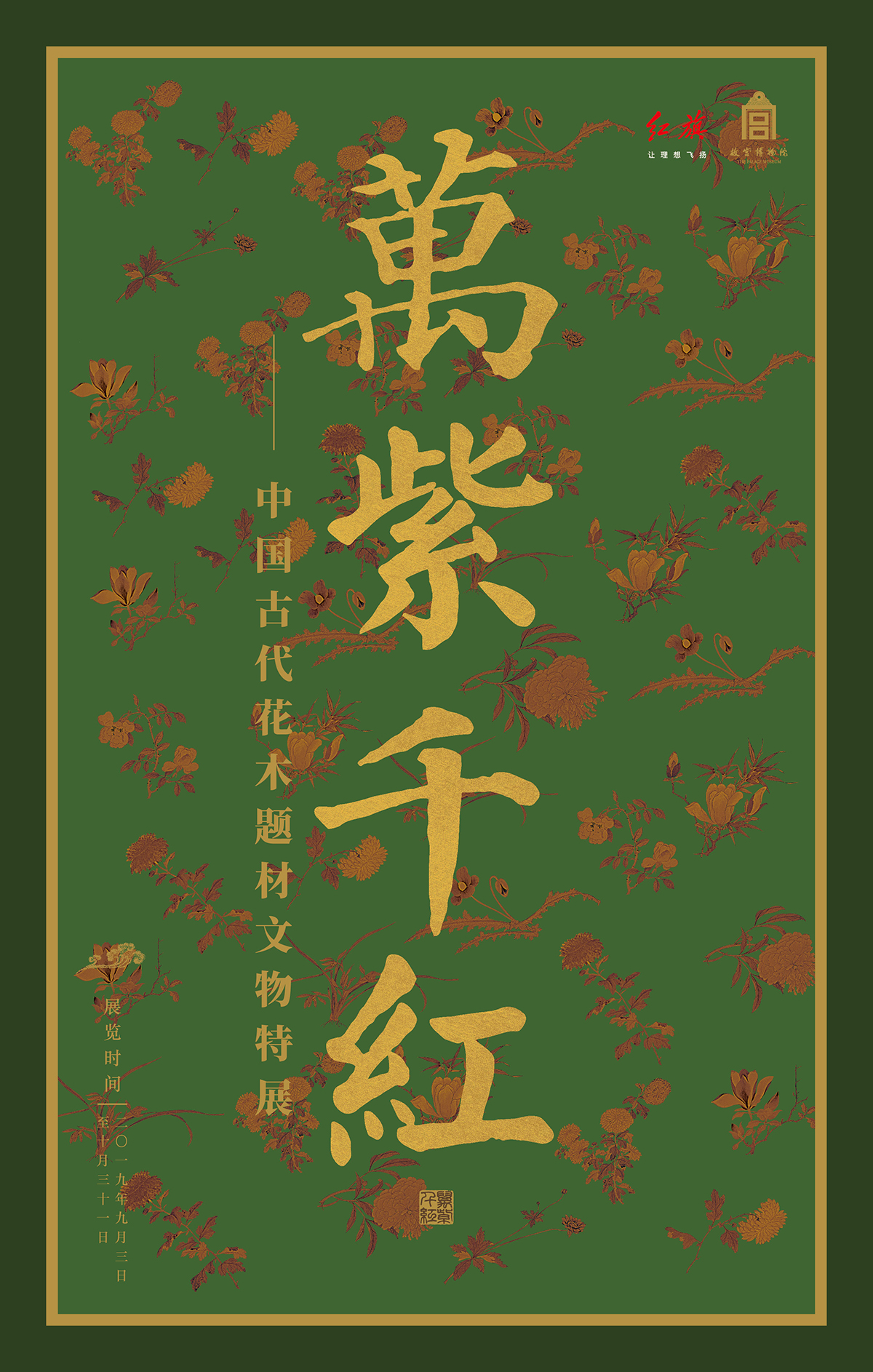
“Seasons of Beauty: A Special Exhibition of Floral Themed Artifacts” is a showcase of China’s ancient legacy of incorporating images of flowering plants and trees into various forms of art. Imbued with deep significance, the artistic depiction of flowering plants and trees is an integral part of daily Chinese life and an important aspect of traditional culture. This exhibition is part of the national celebrations of the seventieth anniversary of the establishment of the People’s Republic of China and a blessing offered by the Palace Museum for the perpetuity and opulence of the great nation of China (referred to here in Chinese as zuguo, the “Ancestral Country”).
As the first largescale exhibition with this theme, “Seasons of Beauty: A Special Exhibition of Floral Themed Artifacts” presents historical artwork in a modern curatorial context from current academic perspectives while integrating traditional reflections and colloquial expressions associated with flowering plants and trees. With over 200 pieces (or sets) on display, the systematic exhibition features some of the most exquisite paintings, ceramics, lacquers, silks, embroideries, and screens with related images and documents from Chinese history. First-rank cultural relics from the Song (960–1279) and Yuan (1279–1368) dynasties are among the presented works—many of which have never before been viewed by the general public.
The concept of “flowers and plants” (huahui) has been prevalent since the Qing dynasty (1644–1911) and is now a commonly used expression; however, the Chinese have used “flowering plants and trees” (huamu) from early in dynastic history. The word may also be understood as “flora”, “flowers and trees”, or “flowers, plants, and trees” and is often used in the context of ornamental garden flora. Books such as the anonymously authored The King of Wei Record of Flora (Weiwang huamu zhi), Flora of Pingquan (Pingquan huamu ji; alternately titled Flora of the Pingquan Mountain Residence, Pingquan shanju caomu ji) by Li Deyu (787–850), and Flora of Luoyang (Luoyang huamu ji) by Zhou Shihou (1031–1087) all have this formulation their titles. The concept may be narrowly understood as decorative blossoming trees such as the plum or garden flowers including the peony and other commonly seen flowering plants of a Chinese garden. More broadly, “flowers and plants” include bamboo, pine, and fruit bearing plants and trees of all kinds. The traditional culture developed in association with flora is a comprehensive reflection of Chinese experiences and understandings of the natural world.
The Chinese introduction to the exhibition beautifully communicates how flowers, found in a diversity of colors and fragrances, fill the natural world with elegance. Other plants and trees provide the world with richness of character; the bamboo, for instance, is a symbol of cultivated uprightness. Evergreens tower in majesty while the twisted branches of the plum tree blossom even while enduring frigid temperatures. Flowers and plants of all types are beloved elements of daily life appreciated by all. Throughout history, artists have depicted their experiences and understandings of natural beauty in a variety of forms and genres. The exhibition is divided into three sections: “Seasonal Sketches”, “Refined Leisure”, and “Emotive Significance”.
Section I: Seasonal Sketches
Found in the West Tower Gallery, the first section, “Seasonal Sketches”, presents detailed paintings of flora by historical Chinese artists. Primarily featuring works by court painters and professional artists, this gallery allows visitors to experience the natural pleasures of the four seasons in an array of floral splendor. The orchid of spring, chrysanthemum of autumn, lotus of summer, and plum blossom of winter represent the magnificence of seasonal flora, the circle of life, and the fourfold cycle of the year. Traditional Chinese artists have observed the natural world and made its phenomena their tutors. Their resulting depictions are exemplified in the splendid paintings of Huang Quan (act. early-tenth century) and his sons; the colorful, freestyle works of Xu Chongsi of the Southern Tang (937–975); and the grandeur of Hui Nantian (1633–1690, courtesy name Shouping) of the early-Qing.
Section II: Refined Leisure
Located in the Central Tower Gallery, the second section, “Refined Leisure”, is an encounter with flora via the revered art of traditional brushwork by literati painters and select works by non-literati artists. The works, accomplished with black ink exclusively or with added color, are presented in historical sequence. The beauty of flora is seen in Tao Yuanming’s (352 or 365–427) poetry about picking chrysanthemums, Zhou Dunyi’s (1017–1073) love for the lotus, and Lin Bu’s (967–1028, also known as Lin Hejing) fidelity to his “wife” the plum blossom. The literati often portrayed the Three Friends of Winter (suihan sanyou; i.e., pine, bamboo, and plum) and the Four Superior Men (si junzi; i.e., plum, orchid, bamboo, and chrysanthemum) in vivid brushwork. Xu Xi of the Southern Tang developed the art of bird and flower paintings with ink and added color. Other artists of this eminent class made their own contributions to ink painting in their depictions of these and other flowers and plants.
Section III: Emotive Significance
Set in the East Tower Gallery, the third and final section, “Emotive Significance”, offers a detailed view of the deep meaning and auspicious import of flora in traditional Chinese imagery. Not limited to paintings with this subject, the gallery exhibits a wealth of cultural artifacts demonstrating how the culture of flora has become interwoven into the fabric of daily life. For example, The Book of Poetry (Shi jing) subtly describes the elegance and fertility of a young bride in the verse “The peach tree is young and elegant; Brilliant are its flowers.” (translation by James Legge). From ancient times, floral beauty has been associated with the alluring appearance of a woman and the virtues embodied in femininity. Flowers have also been offered in the worship of gods and the veneration of the Buddha and bodhisattvas. Additionally, specific plants are associated with unique auspicious meanings; the pine and chrysanthemum, for example, represent longevity. Based on this symbolism, works in this section are arranged according to their cultural significance, including groupings of floral imagery associated with femininity, religion, literati, and auspiciousness.
Translated and edited by Adam J. Ensign and Zhuang Ying





